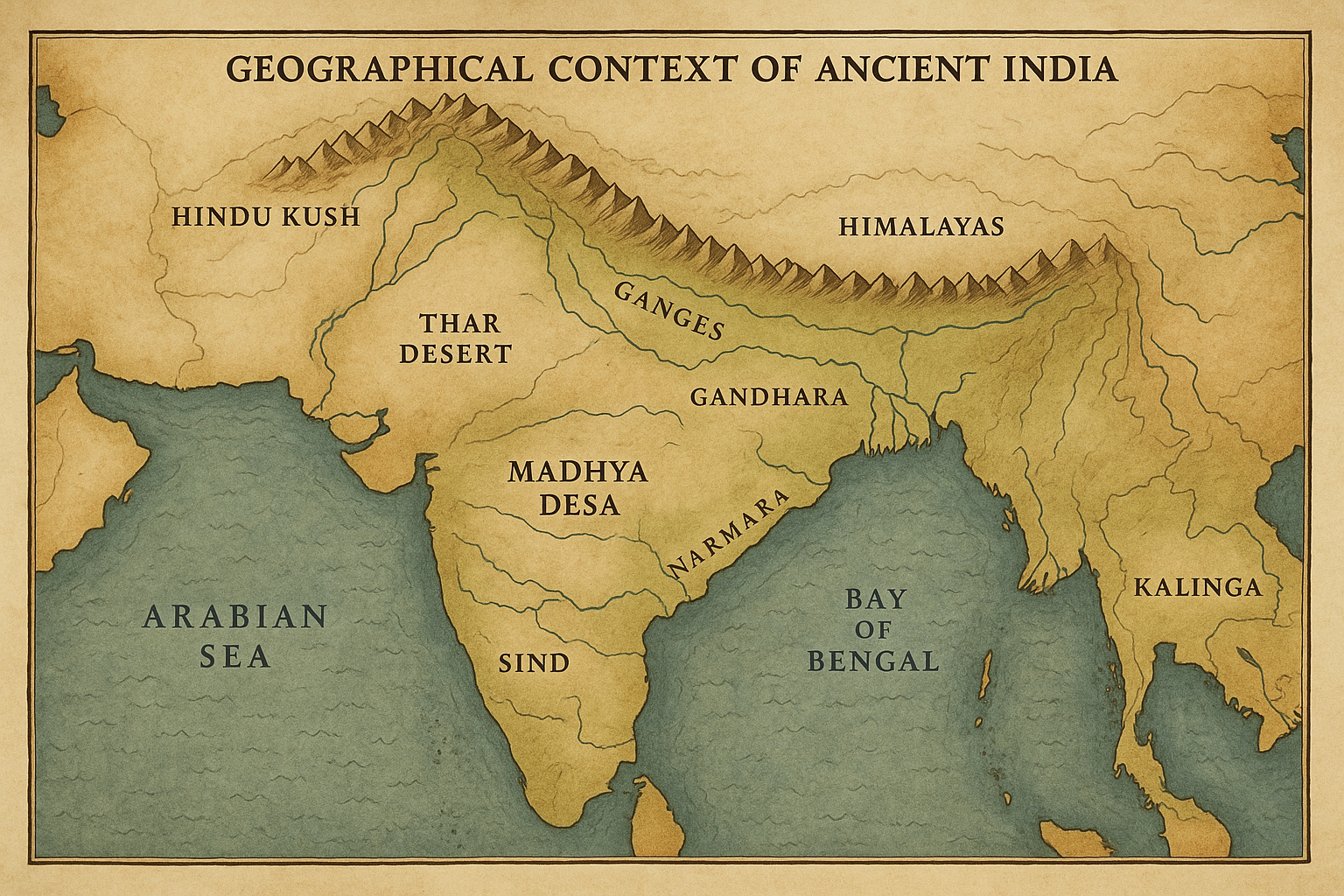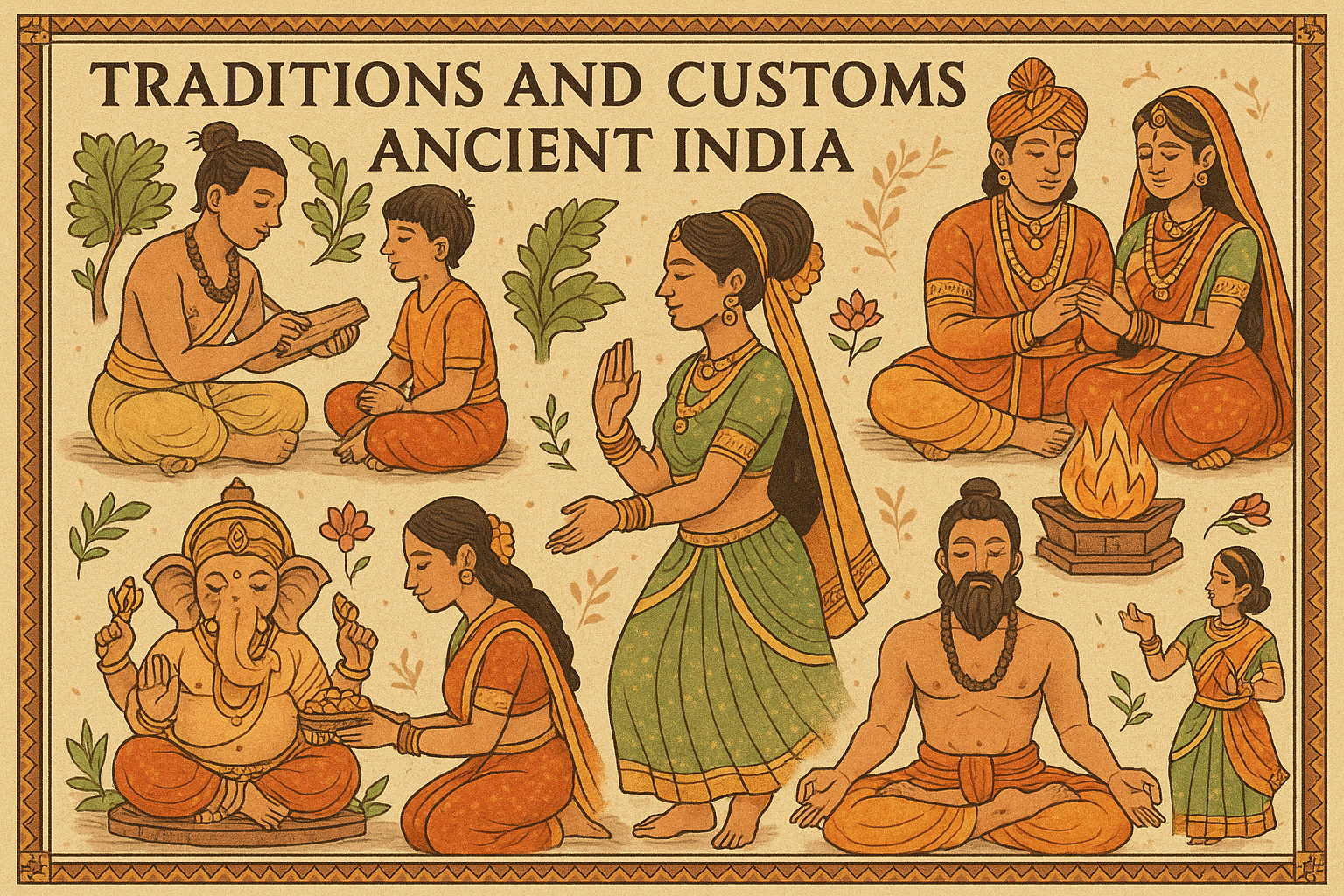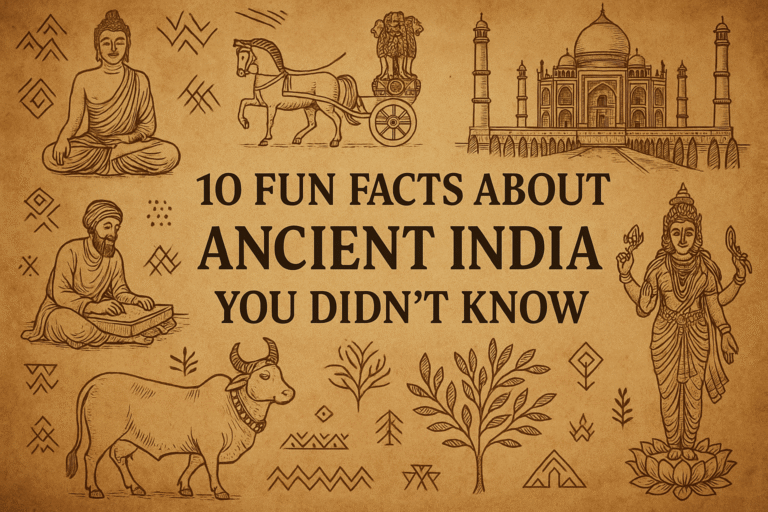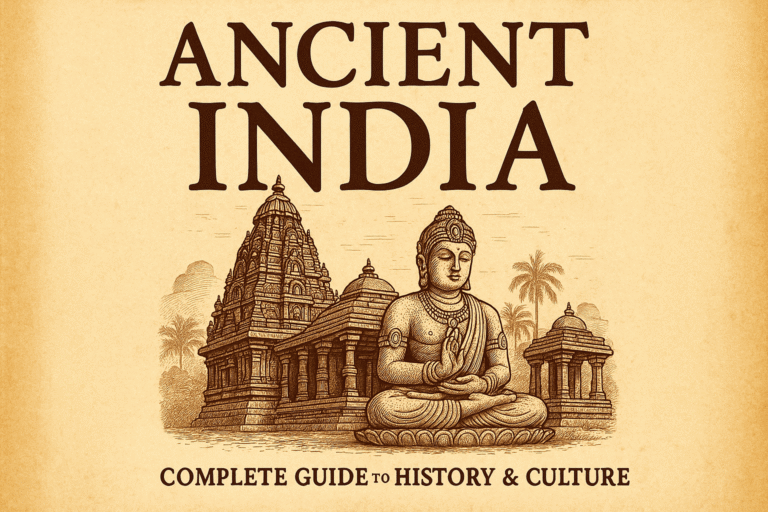<meta name='impact-site-verification' value='34369dc5-877c-4282-90a9-36f86721ccfa'>
Daily Life in Ancient India: Society Culture & Traditions
Ancient India represents one of humanity’s most remarkable civilizations, spanning thousands of years and encompassing diverse cultures, traditions, and innovations. From the sophisticated urban planning of the Indus Valley civilization around 2600 BCE to the golden age of the Gupta Empire in the 4th century CE, this vast subcontinent witnessed the rise and fall of numerous dynasties that shaped the foundation of modern Indian society.
Understanding daily life in Ancient India provides crucial insights into how ordinary people lived, worked, and celebrated within complex social structures. The period encompassed major civilizations including the Indus Valley civilization, the Vedic Age, the Mauryan Empire, and the Gupta Empire, each contributing unique elements to the rich tapestry of Indian culture.
This exploration examines the intricate details of everyday existence in Ancient India, from the geographical landscape that shaped settlements to the social hierarchies that governed interactions. By examining traditions, customs, and cultural achievements, we gain a comprehensive understanding of how ancient Indian society functioned and evolved over millennia.
The legacy of Ancient India extends far beyond historical significance, influencing contemporary practices, philosophical thought, and cultural expressions that continue to resonate globally. Through careful examination of archaeological evidence, ancient texts, and scholarly research, we can reconstruct the vibrant world of Ancient India and appreciate its enduring contributions to human civilization.
Geographical Context of Ancient India
The geographical landscape of Ancient India played a fundamental role in shaping the daily lives of its inhabitants. The subcontinent’s diverse terrain encompassed fertile river valleys, vast plains, mountainous regions, and coastal areas, each presenting unique opportunities and challenges for settlement and development.

The Indus River Valley, stretching across present-day Pakistan and northwestern India, hosted one of the world’s earliest urban civilizations. Cities like Harappa and Mohenjo-Daro emerged along these fertile riverbanks, benefiting from rich alluvial soil and reliable water sources. Mohenjo-Daro was an elaborately constructed city with streets laid out evenly at right angles and a sophisticated drainage system, demonstrating advanced urban planning capabilities.
The Ganges River Valley became another crucial center of civilization, particularly during the Vedic period. The fertile plains supported extensive agriculture, allowing communities to develop stable settlements and complex social structures. The monsoon climate provided predictable seasonal rainfall, enabling farmers to plan agricultural cycles and develop sophisticated irrigation systems.
Mountain ranges, including the Himalayas in the north and the Western Ghats along the coast, influenced trade routes and cultural exchange. These natural barriers provided protection from invasions while mountain passes facilitated controlled interactions with neighboring civilizations. Coastal regions along the Arabian Sea and Bay of Bengal enabled maritime trade, connecting Ancient India with distant lands and fostering cultural exchange.
The Deccan Plateau, characterized by volcanic soil and diverse mineral resources, supported both agriculture and early metallurgy. This geographical diversity created distinct regional cultures while maintaining overarching connections through trade networks and cultural practices.
Social Structure and Organization
Ancient Indian society operated within a complex hierarchical system known as the Varna system, which profoundly influenced daily life and social interactions. This four-tier structure categorized society into distinct groups: Brahmins (priests and scholars), Kshatriyas (warriors and rulers), Vaishyas (merchants and farmers), and Shudras (laborers and service providers).
The Brahmins occupied the highest position in the social hierarchy, responsible for religious ceremonies, education, and preserving sacred knowledge. They maintained the Vedas and Upanishads, serving as intermediaries between the divine and mortal realms. Their daily activities centered around ritual practices, teaching, and scholarly pursuits.
Kshatriyas held political and military authority, governing territories and defending communities from external threats. Their lifestyle emphasized martial training, governance responsibilities, and upholding dharma (righteous duty). Royal courts became centers of cultural patronage, supporting artists, scholars, and religious practitioners.
Vaishyas formed the economic backbone of society, engaging in trade, agriculture, and craftsmanship. They managed commercial networks, developed currencies, and established trade relationships with distant regions. Their daily routines involved market activities, agricultural supervision, and business negotiations.
Shudras provided essential services and labor, supporting the functioning of the other three varnas. Despite their lower social status, they performed crucial roles in agriculture, construction, and domestic service.
Family structure remained patriarchal, with extended families living in joint household systems. The eldest male typically headed the family, making important decisions regarding marriage, property, and religious observances. Women’s roles varied by social class but generally centered around domestic responsibilities, child-rearing, and religious activities.
Daily Life and Routine Activities
Daily life in Ancient India followed structured patterns influenced by religious beliefs, seasonal cycles, and social obligations. Most people rose before dawn, beginning their day with ritual purification and prayers. Personal hygiene held significant importance, with regular bathing considered essential for spiritual and physical well-being.
Agricultural communities organized their schedules around farming cycles, with the monsoon season determining planting and harvesting periods. Farmers utilized sophisticated irrigation techniques, including wells, canals, and tanks, to manage water resources effectively. Rice cultivation dominated in river valleys, while wheat, barley, and millet grew in drier regions.
Urban dwellers engaged in various occupations including craftsmanship, trade, and administration. Skilled artisans produced textiles, pottery, metalwork, and jewelry, often working in specialized quarters within cities. Markets bustled with activity as merchants displayed goods ranging from local produce to exotic items from distant lands.
Diet consisted primarily of vegetarian foods, influenced by religious principles and agricultural availability. Common meals included rice, lentils (dal), vegetables, and dairy products. Spices such as turmeric, coriander, and black pepper enhanced flavors while providing medicinal benefits. Wealthy families enjoyed more diverse cuisines, including sweets, fruits, and elaborate preparations for special occasions.
Clothing reflected both practical needs and social status. Men typically wore the dhoti, a wrapped garment around the waist and legs, while women donned the sari, an elegant draped cloth. Materials ranged from simple cotton for common people to fine silk and ornate decorations for the wealthy. Jewelry served both decorative and symbolic purposes, with gold and precious stones indicating prosperity and social position.
Traditions and Customs

Religious practices formed the cornerstone of daily life in Ancient India, with elaborate rituals marking important life events and seasonal transitions. Marriage ceremonies represented complex social contracts involving families, communities, and religious authorities. These celebrations could last several days, featuring intricate rituals, music, dance, and communal feasting.
The concept of dharma guided moral conduct and social responsibilities. Individuals were expected to fulfill their duties according to their varna and life stage (ashrama). This system provided structure and meaning to daily activities while maintaining social cohesion.
Festivals celebrated seasonal changes, agricultural cycles, and religious observances. Communities gathered for elaborate celebrations featuring music, dance, dramatic performances, and religious ceremonies. These events strengthened social bonds while preserving cultural traditions across generations.
Religious practices varied but generally included daily prayers, offerings to deities, and observance of sacred texts. Temples served as community centers, hosting religious ceremonies, educational activities, and cultural events. Pilgrimage to sacred sites formed an important aspect of spiritual life, with devotees traveling long distances to visit holy places.
Death rituals emphasized the continuity of life and the importance of proper spiritual transition. Cremation became the preferred method of disposal, accompanied by elaborate ceremonies designed to ensure the deceased’s peaceful passage to the afterlife.
Cultural Achievements and Entertainment
Ancient India produced remarkable cultural achievements that continue to influence global civilization. Literature flourished with the creation of the Vedas, ancient sacred texts containing hymns, rituals, and philosophical discussions. The Upanishads explored profound philosophical questions about existence, consciousness, and the nature of reality.
Epic literature, including the Ramayana and Mahabharata, provided moral guidance while entertaining audiences with heroic tales and complex characters. These works established narrative traditions that influenced storytelling across cultures.
Scientific achievements demonstrated sophisticated understanding of mathematics, astronomy, and medicine. Ancient Indian mathematicians developed the decimal system, the concept of zero, and advanced astronomical calculations. Medical practitioners created comprehensive treatments for various ailments, combining herbal remedies with surgical procedures.
Entertainment played a vital role in daily life, with music and dance forming integral parts of religious and social celebrations. Classical music systems developed complex ragas and rhythmic patterns that expressed emotional and spiritual themes. Dance forms combined athletic skill with artistic expression, telling stories through intricate movements and gestures.
Chariot racing provided thrilling entertainment for spectators while demonstrating skill and bravery. These events often accompanied religious festivals and royal celebrations, creating opportunities for social gathering and community bonding.
Visual arts flourished in sculpture, painting, and architecture. Temples featured elaborate carvings depicting religious themes, historical events, and daily life scenes. These artistic achievements reflected both technical mastery and spiritual devotion.
Educational Systems and Knowledge Preservation
Education in Ancient India operated through formal institutions and informal apprenticeship systems. Gurukulas, residential schools led by learned teachers (gurus), provided comprehensive education combining religious instruction, practical skills, and character development. Students lived with their teachers, creating close mentoring relationships that extended beyond academic learning.
The curriculum encompassed diverse subjects including philosophy, mathematics, astronomy, medicine, and literature. Students memorized sacred texts, developed analytical thinking skills, and learned practical applications of theoretical knowledge. This educational approach produced scholars who contributed significantly to various fields of knowledge.
Women’s education varied by social class and historical period, with some receiving instruction in literature, music, and domestic arts. Certain women achieved recognition as scholars and teachers, though opportunities remained limited compared to men.
Legacy and Lasting Impact
The daily life traditions of Ancient India established foundations that continue to influence contemporary society. Religious practices, social customs, and cultural expressions evolved while maintaining core elements from ancient times. The emphasis on dharma, family relationships, and spiritual development remains central to Indian culture.
Ancient Indian innovations in mathematics, science, and philosophy spread globally through trade networks and cultural exchange. The decimal system, yoga practices, and philosophical concepts influenced civilizations across Asia and beyond.
Understanding daily life in Ancient India reveals the complexity and sophistication of early human societies. The balance between individual fulfillment and social responsibility, the integration of spiritual and material concerns, and the preservation of knowledge across generations demonstrate remarkable achievements in human organization and cultural development. These insights provide valuable perspectives for contemporary discussions about society, culture, and human values, illustrating how ancient wisdom continues to offer relevant guidance for modern challenges.


[…] Jainism, founded by Mahavira, stressed non-violence (ahimsa) and spiritual liberation through right conduct. These religions influenced each other and contributed to the rich philosophical tradition of Ancient India. […]
I like this post, enjoyed this one regards for putting up.